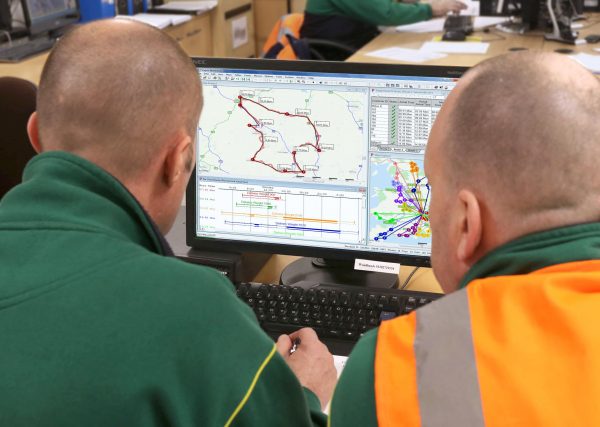Paragon Software Systems, a leader in vehicle routing and scheduling optimisation solutions, sees many benefits in automating the driver debriefing process. It is important to monitor driver and vehicle en-route performance to ensure good planning has been carried out as intended and to help create more realistic plans for the future. Driver debriefing best practices ensure drivers meet customer service requirements, while reducing fuel usage when optimised plans are followed.
“If a driver sticks to the journey plan, fleet operators should know what route they are going to be on and precisely where and when they are making deliveries,” said William Salter, Managing Director, Paragon Software Systems. “Under normal circumstances, drivers have no reason to deviate from the plan. If drivers do deviate from their agreed route for whatever reason, this can jeopardise your planning efforts and cost fleet owners more money.”
To facilitate driver debriefing, Paragon software users utilise the Paragon Route Execution module, which is linked to information from a tracking solutions partner. Using Route Execution, it is possible to compare, amongst many other KPIs (Key Performance Indicators), the plan vs. actual distance travelled and report this in the Paragon Workbench. In Route Execution, the information is displayed in tables. The columns in the table can be sorted and the trips filtered to alert the user to specific driver shifts that need to be examined in more detail.
Using information from Route Execution and from the driver, fleet managers can compare the planned vs. actual trip, discover areas of congestion, review issues with customers, assess problems with loading and unloading deliveries, etc. When investigating the reason for a discrepancy in trip distance, it is invaluable for the user to be able to plot on a roadmap, not only the tracking points that indicate where the driver actually went, but also the planned roads that Paragon would have specified during the planning process. The planned journey is calculated by using the configuration of road speeds, road map edits, regional reduction areas and optional truck restrictions, such as bridge heights. The roadmap can also be modified in Paragon to allow for local restrictions that may constrain drivers, which is often the case with residential areas.
It is common for users to create a specific workspace display that is configured to show particular map and table details for use in the debriefing process. Often a cost effective additional “workbench” screen is used to provide this valuable information to users in the transport department. The results of such analysis may highlight changes being incorporated into the Paragon set-up. For example, a specific stretch of road could be excluded from use. These alterations can be made quickly. The subsequent plans will then improve in terms of their accuracy.
“Taking time to ascertain what went right and what went wrong during a driver’s journey is time well spent. The feedback you receive can help improve efficiency and reliability in the future,” adds William Salter.


